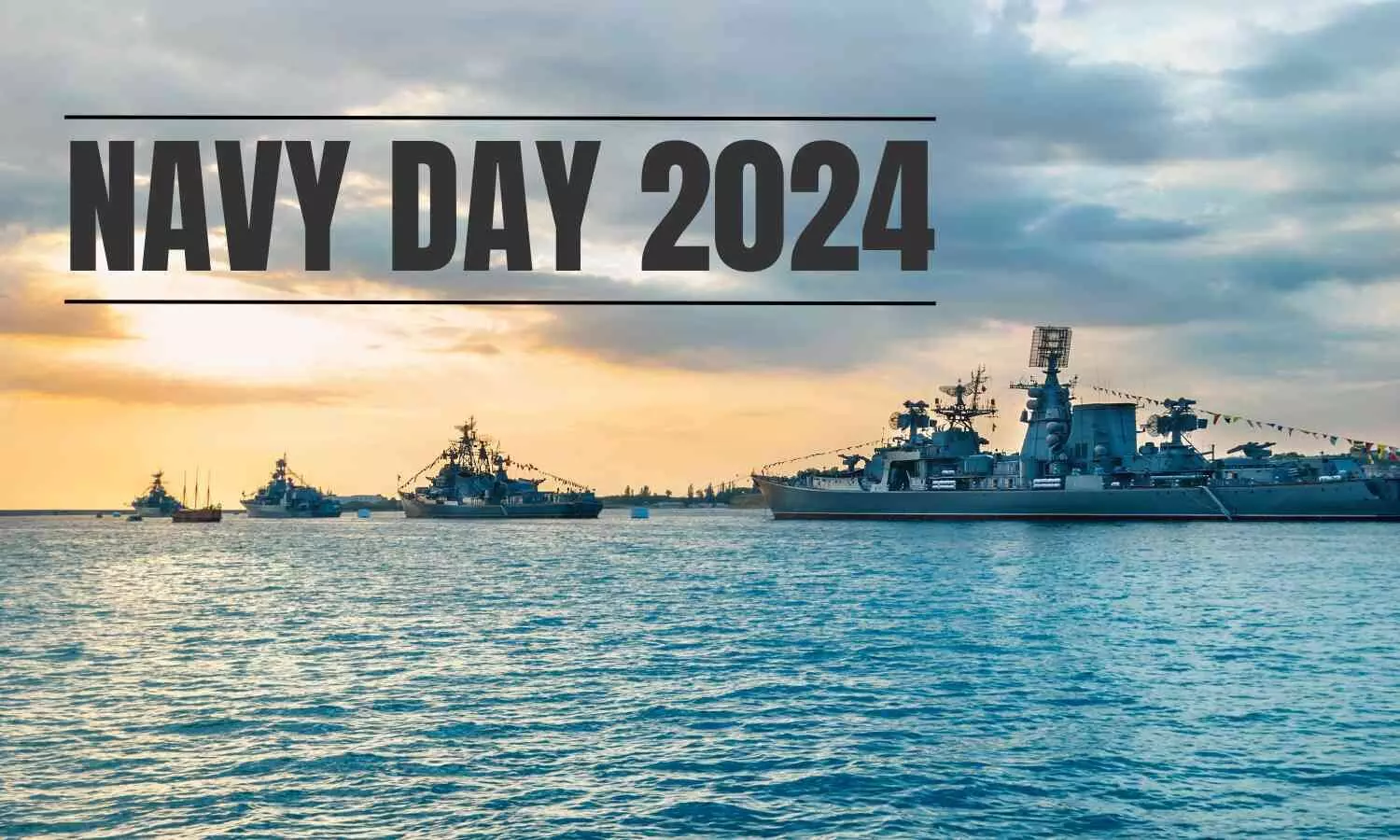Live
- Deputy CM Bhatti Vikramarka Inaugurates Power Substation, Criticizes BRS
- Major Phase in Old City Metro Land Acquisition, Cheques to Be Distributed
- Tragic Road Accident Near Medchal Checkpost: Family of Three Killed, Child Injured
- Road Accident on Hyderabad-Warangal National Highway: One Dead, Five Injured
- Massive Fire Breaks Out at Minerva Hotel in Hyderabad’s Himayatnagar
- PM Modi sets ball rolling for India to become world’s 2nd largest metro rail network
- Sexual assault case: Anna University asks students to use only bicycles inside campus
- Lack of genuine political leadership led to Manipur violence: Apex Meitei body
- Stage 3 restrictions under GRAP lifted in Delhi-NCR as AQI shows improvement
- No room for unmarried couples: Oyo explains check-in policy for partner hotels
Just In
Navy Day 2024: Celebrating the Indian Navy’s Bravery and Achievements


Navy Day 2024: Celebrating the Indian Navy’s Bravery and Achievements
Learning about the significance of Navy Day in India, celebrated on December 4th, honoring the Indian Navy's bravery and contributions, including Operation Trident, disaster relief missions, and global relations. Learn about its history, achievements, and celebrations.
The Navy Day in India is celebrated on December 4 to honor the courage and significant role of the Great Indian Navy in safeguarding the nation’s maritime interests. This special day also includes the daring launch of Operation Trident against Pakistan during the Indo-Pakistan War of 1971.
On this day, we not only remember the Navy’s accomplishments but also the awareness about its importance in maintaining national security.
Significance of Navy Day-
The Indo-Pakistan War which happened in 1971 marked a defining moment for the Indian Navy, mostly with Operation Trident. During nighttime on December 4th, 1971, the Indian Navy launched a surprise attack on Karachi harbor, causing a lot of damage to Pakistan’s naval assets. This dangerous and bold operation highlighted the strength of the Indian Navy.
The role of Navy in security-
The Indian Navy safeguards the country’s coastal borders, economic zone and trade routes. As a well-balanced and modern force, the Navy operates above and beneath the ocean surface to ensure the nation’s security. Its responsibilities include-
Defending India’s Maritime Borders- The Navy plays an important role in preventing terrorist entry inside the country, protecting marine resources and removing any threats from others.
Disaster Relief and Humanitarian Missions- During natural disasters like tsunamis, the Navy provides aid, rescues missions and supplies for the affected areas.
Strengthening Global Relations- Through port visits and cooperative missions, the Navy creates good relations with other countries for India.
Achievements and Contributions of the Indian Navy-
The Indian Navy has achieved many milestones over the years, showing its prowess and commitment to the whole nation. Here are some of the key contributions and achievements-
Operation Trident- This dangerous attack which was successful on Karachi Harbor in 1971 remains a shining example of the Indian Navy’s courage.
Anti-Piracy Missions- The Navy has combated piracy in the Indian Ocean, ensuring safety for the international shipping lanes.
Evacuation Operations- The Navy has played an important role in protecting Indian and foreign nations from conflict zones, such as in Yemen during Operation Rahat.
Strengthening India’s Maritime Power- With advanced ships and submarines, the Navy has significantly enhanced its capabilities, making it a strong force in the Indian Ocean region.
Celebrating Navy Day 2024-
Celebrations for Navy Dat are usually grand and inspiring. Events like these are planned by the Eastern Naval Command. The headquarters are in Visakhapatnam. The day begins with a solemn wreath-laying ceremony at the War Memorial on RK Beach to honor the bravery of the naval personnel.
One of the main highlights is the Naval Display showcasing the skills of the Indian Navy. Ships and submarines perform stunning demonstrations to exhibit their operational efficiency. The event also includes military parades, community services and cultural programs.
Visitors have the great opportunity to interact with the naval officers and tour warships, helping them learn more about the Navy life and operations.
The Navy also organizes a Military Photo Exhibition, providing a history of achievements of the naval force. Activities like Navy Ball, Navy Queen Contests and other programs happen to help engage in the community.
Chhatrapati Shivaji: The Father of the Indian Navy-
Chhatrapati Shivaji Maharaja who was also the great Maratha Emperor is known as the “Father of the Indian Navy.” During the 17th century, Shivaji emphasized building a strong naval fleet to protect the western coast of the nation. His amazing efforts laid the foundation for India’s maritime strength.
Structure of the Indian Navy-
The Indian Navy operates by the command of the President of India, who is the Supreme Commander. The Chief of the Naval Staff also known as CNS oversees its operations and administration. The Indian Navy is divided into three commands-
Western Naval Command (Mumbai)- It is responsible for operations in the Arabian Sea.
Eastern Naval Command (Visakhapatnam)- It oversees the activities in the Bay of Bengal.
Southern Naval Command (Kochi)- It focuses on the training and administrative duties.
Why Navy Day Matters-
Navy Day serves a critical role for the Indian Navy and India itself. It's a reminder about how much the Navy helps in national security and international diplomacy. It also shows how much the soldiers sacrifice for us and give their best in their work and in protecting the country.
This year, as we celebrate Navy Day, we shall remember the Navy’s glorious history and achievements. The day reminds us of the Navy’s bravery during missions like Operation Trident. This emphasizes the Navy’s importance in ensuring India’s safety. Let us appreciate these soldiers and continue to celebrate this awesome day!
Jai Hind, Jai Bharat!

© 2024 Hyderabad Media House Limited/The Hans India. All rights reserved. Powered by hocalwire.com






